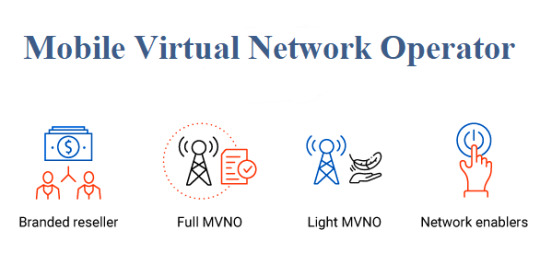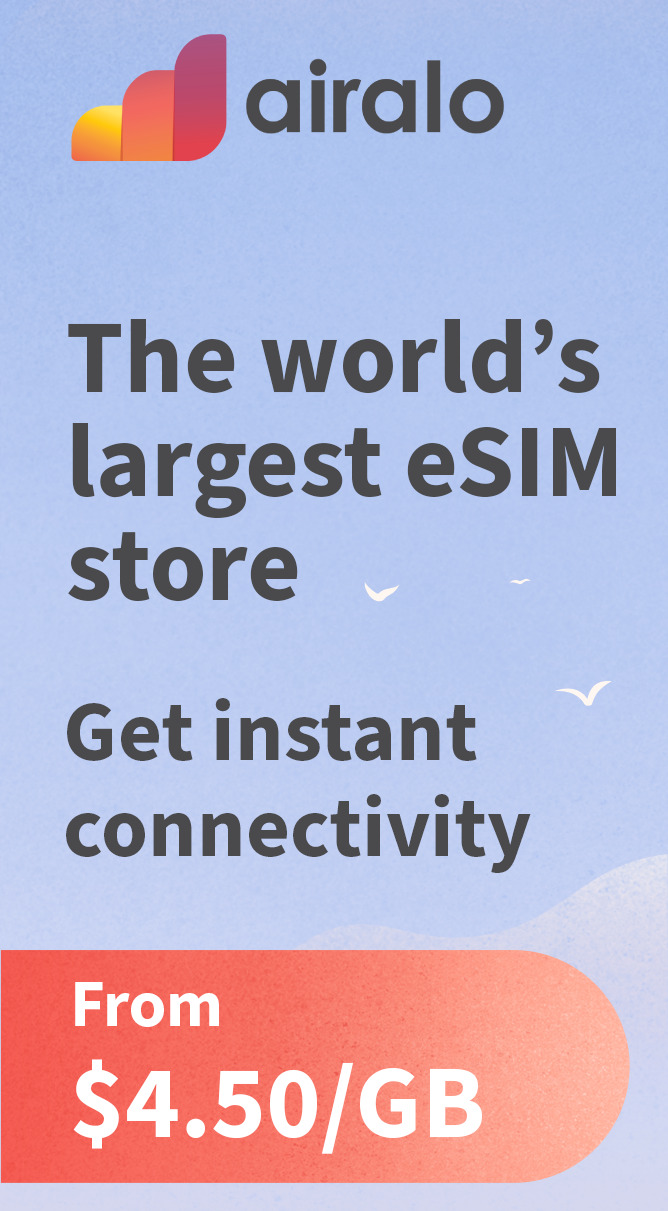#ConnectivitySolutions
Explore tagged Tumblr posts
Text
Discover the top Teltonika routers of 2025, offering unparalleled connectivity and security at unbeatable prices.
#TeltonikaRouters#BestPrice2025#ConnectivitySolutions#SecureNetworking#IoTDevices#IndustrialRouters#RemoteManagement#NetworkSecurity#TechDeals#teltonikanetworks
0 notes
Text
🌟🌟 Shoutout to Cheezbot! 🌟🌟 A cheesy thank you to the amazing Cheezbot for their support! 🧀 Your follow and promotion of my product have been a huge boost to our small business. Your cheesy charm and supportive community have brought so much exposure to our handcrafted products. We're eternally grateful for your kindness and the love you've shown us. To our followers: Join us in showing Cheezbot some love back! Visit their page and give them a cheesy hug. Together, let's spread more cheesy goodness online! 🧀🧀 #CheesyThankYou #CheezbotAppreciation
#WiFiProfits#InternetAccess#ConnectivitySolutions#ReliableWiFi#BusinessWiFi#HomeWiFi#WiFiOptimization#NetworkManagement#WirelessSolutions#WiFiMarketing#WiFiAnalytics#WiFiMonetization
1 note
·
View note
Text
#DigitalTransformation#CloudNetworking#MPLSSolutions#NetworkSecurity#IoTConnectivity#WANOptimization#NextGenNetworking#EnterpriseConnectivity#CloudIntegration#MPLSNetworking#DisasterRecovery#SecureConnections#NetworkManagement#MPLSCloud#ConnectivitySolutions
0 notes
Text
Unlock Sena Bluetooth Communications for Seamless Connectivity
"Unlock Sena Bluetooth Communications for Seamless Connectivity With regards to stirring things up around town street on your motorcycle, nothing beats that impression of chance. Nonetheless, we ought to be certified — what's an uncommon ride without having the choice to converse with your buddies or jam to your main tunes? That is where Sena Bluetooth correspondences come in, changing your motorcycle adventures into completely related information.
Envision cruising down a curving turnpike with the breeze in your hair and your best riding buddies right close by. With Sena's Bluetooth systems, you can visit away without the issue of hand signals or hollering over the thunder of the motor. It resembles having a discussion in your lounge room yet with an exceptional view! You'll have the option to share chuckles, bring up cool sights, or simply stay with one another — all while maintaining your attention out and about.
Quite possibly the coolest thing about Sena's systems is that they are so natural to utilize. With an instinctive arrangement and controls that fit right on your protective helmet, you can settle on decisions or change music tracks without taking your hands off the handlebars. Truly, how marvelous is that? Besides, many models accompany voice order highlights, so you can protect the ride smoothly and remain without fumbling around.
Safety is a big deal when you’re on two wheels, and Sena’s got your back. Their group intercom capabilities let you connect with multiple riders at once, making it super easy to stay coordinated on group rides. Need to tell everybody about that sharp turn ahead? Forget about it! Clear correspondence implies fewer errors and significantly more tomfoolery.
Moreover, we shouldn't dismiss the sound features! With Sena, you can influence your #1 tunes or deal a playlist with your riding group. The sound quality is first-rate, so you won't think twice — or the thunder of your motorcycle. In addition, with worked-in GPS prompts, you'll get turn-by-turn headings directly to your helmet. Not any more squinting at a telephone or GPS while attempting to explore; you'll have the option to take it all in and find new streets gracefully.
Toughness is another key component that makes Sena an easy decision for motorcyclists. These systems are intended to deal with anything Nature tosses at you, from stormy days to bursting sun. You can ride with certainty, realizing that your Sena gear is totally solid and keeps you engaged through everything.
Battery duration? Definitely! Sena's Bluetooth systems are made for long rides, offering long periods of talk time on a solitary charge. Whether you're on an end-of-the-week trip or a cross-country venture, you will not need to stress over losing association partially through your experience.
So for what reason would it be advisable for you to think about putting resources into Sena Bluetooth communications? It's not just about remaining associated; it's tied in with enhancing your whole riding experience. Imagine yourself cruising down the expressway, partaking in the organization of your companions, and feeling that surge of opportunity — all while remaining protected and informed."""

#senacommunications#bluetoothconnectivity#seamlesscommunication#motorbikeaccessories#ridergear#motorbikelifestyle#connectivitysolutions#bikeadventures#ridingcomfort#techforriders
0 notes
Text
5G Transport Networks Market is Dazzling Worldwide and Forecast to 2030|GQ Research
The 5G Transport Networks market is set to witness remarkable growth, as indicated by recent market analysis conducted by GQ Research. In 2023, the global 5G Transport Networks market showcased a significant presence, boasting a valuation of US$ 0.33 billion. This underscores the substantial demand for 5G Transport Networks technology and its widespread adoption across various industries.
Get Sample of this Report at: https://gqresearch.com/request-sample/global-5g-transport-networks-market/

Projected Growth: Projections suggest that the 5G Transport Networks market will continue its upward trajectory, with a projected value of US$ 3.1 Billion by 2030. This growth is expected to be driven by technological advancements, increasing consumer demand, and expanding application areas.
Compound Annual Growth Rate (CAGR): The forecast period anticipates a Compound Annual Growth Rate (CAGR) of 37%, reflecting a steady and robust growth rate for the 5G Transport Networks market over the coming years.
Technology Adoption:
The adoption of 5G transport networks is gaining momentum globally, propelled by the promise of ultra-fast speeds, low latency, and high reliability.
Key technologies such as network slicing, edge computing, and massive MIMO (Multiple Input Multiple Output) are pivotal in enabling the transition to 5G transport networks.
However, challenges such as infrastructure deployment costs, spectrum availability, and interoperability issues remain significant barriers to widespread adoption.
Application Diversity:
5G transport networks facilitate a diverse range of applications spanning various industries, including healthcare, automotive, manufacturing, and entertainment.
Ultra-reliable low-latency communication (URLLC) enables mission-critical applications such as autonomous vehicles and remote surgery.
Enhanced mobile broadband (eMBB) capabilities cater to high-bandwidth applications like augmented reality (AR), virtual reality (VR), and 4K video streaming.
Consumer Preferences:
Consumers increasingly demand seamless connectivity, high-speed internet access, and immersive multimedia experiences.
The proliferation of smartphones, IoT devices, and smart home technologies fuels the need for robust and reliable network infrastructure.
Personalization, customization, and data privacy are paramount concerns driving consumer preferences in the 5G era.
Technological Advancements:
Continuous advancements in networking technologies, including software-defined networking (SDN) and network function virtualization (NFV), optimize network efficiency and scalability.
Evolution towards cloud-native architectures and distributed computing models enhances agility, flexibility, and scalability in 5G transport networks.
Innovations in radio access technologies (RATs) such as beamforming and massive MIMO improve spectral efficiency and network capacity.
Market Competition:
Intense competition prevails among telecom operators, equipment vendors, and technology providers vying for market share in the 5G transport networks ecosystem.
Strategic partnerships, mergers, and acquisitions are commonplace as stakeholders seek to expand their product portfolios and geographic reach.
Differentiation through service innovation, quality of service (QoS), and value-added offerings becomes imperative in a fiercely competitive landscape.
Environmental Considerations:
Sustainable practices and green initiatives are gaining prominence as environmental concerns escalate.
Energy-efficient network architectures, renewable energy integration, and lifecycle management strategies mitigate the environmental footprint of 5G transport networks.
Regulatory mandates and industry standards drive compliance with eco-friendly practices, fostering a culture of corporate social responsibility (CSR).
Regional Dynamics: Different regions may exhibit varying growth rates and adoption patterns influenced by factors such as consumer preferences, technological infrastructure and regulatory frameworks.
Key players in the industry include:
Cisco Systems, Inc.
Nokia Corporation
Huawei Technologies Co., Ltd.
Ericsson AB
ZTE Corporation
Samsung Electronics Co., Ltd.
Fujitsu Limited
NEC Corporation
Ciena Corporation
Juniper Networks, Inc.
CommScope Holding Company, Inc.
Corning Incorporated
Infinera Corporation
Mavenir Systems, Inc.
Telefonaktiebolaget LM Ericsson (publ)
The research report provides a comprehensive analysis of the 5G Transport Networks market, offering insights into current trends, market dynamics and future prospects. It explores key factors driving growth, challenges faced by the industry, and potential opportunities for market players.
For more information and to access a complimentary sample report, visit Link to Sample Report: https://gqresearch.com/request-sample/global-5g-transport-networks-market/
About GQ Research:
GQ Research is a company that is creating cutting edge, futuristic and informative reports in many different areas. Some of the most common areas where we generate reports are industry reports, country reports, company reports and everything in between.
Contact:
Jessica Joyal
+1 (614) 602 2897 | +919284395731
Website - https://gqresearch.com/
#5GTransport#TelecomTechnology#NetworkInfrastructure#DigitalTransformation#TechInvestments#ConnectivitySolutions
0 notes
Text
Free Calling Without Internet - How to Stay Connected Anywhere, Anytime
Welcome to our guide on making free calls without an internet connection. We'll look at ways to stay connected everywhere. You will learn about virtual phone numbers and services without the need for usual internet.
Picture calling or getting calls without Wi-Fi or mobile data. You can do this with virtual phone numbers. These numbers let you call with many apps, giving you a unique way to stay connected without regular internet.
VoIP traffic makes talking possible even without internet. It helps move your voice using smart methods. This lets you call smoothly even if there's no typical internet connection. Companies and people can enjoy cheap, good voice calls thanks to Wholesale VoIP providers.

Next, we will learn more about virtual phone numbers, VoIP, and its providers. Plus, we'll dive into sending texts from your computer and fixing common issues. This part is fun and full of useful info.
After reading, you'll know a lot about tools for endless talking. Whether you travel or find places with no internet, you'll learn to manage. Get ready to make free calls and send messages without needing the net. Keep reading!
Understanding Free Calling without Internet
In today's world, being able to connect is key. But what if there's no internet where you are? You can still make calls. This section will tell you about making free calls without internet. Get ready to learn about virtual phone numbers and VoIP traffic.
Making free calls without internet means talking without the usual web connections. Virtual phone numbers and VoIP traffic make this possible. They use smart technologies instead.
A virtual phone number links old phone systems with new digital ones. Having one means you can call over the internet. You don't need a real phone line. These numbers live in the cloud. You can use them with any device that's online.
VoIP traffic is the special data that lets voice calls happen online. It has its own ways to send your voice well. This lets people talk clearly, even without regular web connection.
With virtual numbers and VoIP, being offline doesn't mean you can't call. They are a big help for anyone who's far from home. Or for times when the internet drops out. They keep you connected no matter what.
Virtual Phone Numbers and Their Benefits
Virtual phone numbers are great for both people and businesses. They help with easy and smooth talking. These numbers work between normal phone lines and the internet world. So, you can talk on the phone without using the internet.

The best thing about virtual numbers is you can forward calls to any gadget, from anywhere. Calls to your virtual number reach the device you pick. So, you never miss an important call, whether you're home or on another continent.
Virtual numbers also let you look like you're local, national, or international. You can pick an area or country code for your number. This helps customers or friends all over the world find you easily. It's great for businesses that want to seem local in many places.
Using a virtual number can save you a lot of money. It's because it uses VoIP, not traditional phone lines. So, you avoid high international call costs and line fees. This is a big win for globetrotters and large or small companies.
Plus, virtual numbers keep your personal number private. You can use them for work, for ads, or for talking to friends. This way, your main number doesn't get filled with spam calls.
To sum up, virtual phone numbers make talking easier for everyone. They help with call forwarding, save money, and protect your personal number. They open up new ways to stay in touch, making communication reliable in any situation.
Exploring VoIP Traffic
In today's world, VoIP traffic is very important. It helps us talk over the internet without needing phone lines. This amazing tech lets us have clear talks over any network, no matter how far apart we are.
VoIP is different from normal phones. It changes our voice into data packets to send over networks. This makes talking cheaper and easier because we don't need special phone lines for it.

VoIP works by sending our voices in small pieces over the network. At the end, these pieces come together so we can have a smooth talk in real-time.
VoIP makes sure our calls are clear and don't get interrupted. It sets our voice first, so we don't hear delays or bad quality on the other end.
Also, VoIP comes with lots of cool features. We can forward calls, leave voicemails, make conference calls, and use it with other apps like messaging or video calls.
For businesses, VoIP is great for putting voice and data communication together. This makes managing networks easier and cheaper, since they don't need to keep the systems separate.
So, VoIP is changing how we talk these days. It's making communication better and easier, no matter where we are or what kind of network we use.
Wholesale VoIP Providers
Wholesale VoIP providers are key for free calls without the internet. They offer cheap options for businesses and people. This uses VoIP to allow easy talking.
For calls without the web, these providers are very important. They make sure talking over voice works well, even offline.
They give businesses the tools to always talk to clients and staff. This means you can communicate clearly, even without internet, with their help.
People not just in business can save with these providers. They can talk for free using special plans. These plans work even without the web, keeping calls clear and smooth.

The Power of SIP Numbers
SIP numbers are key for free calls without the internet. They use VoIP to connect calls.
They're for calls over the internet, ditching the need for old phone lines. This is awesome for saving money and staying connected anywhere.
The Advantages of SIP Numbers
SIP numbers make calling easy and better in many ways:
Flexibility: You can make calls from anywhere with internet. Perfect for travel or working from anywhere.
Cost savings: Calls are cheaper, even overseas. Good for your wallet and business budgets.
Scalability: You can add or remove lines easily. This changes with your business or personal life, without stress.
Advanced features: Enjoy cool features like call forwarding or voicemail. They help you work better and talk more easily.
Integration with other systems: Easily connect to other tools like CRM or call centers. This makes talking with others smoother.
SIP numbers change how we talk without old phone tech. They are easy, save money, grow with your needs, and have cool features. Embracing SIP numbers brings new, easy ways to connect.
Setting Up Your Computer for Text Messaging

Do you want to send and get text messages from your computer? You can do it! Setting up is easy on both Windows and Mac. Soon, you'll text without your phone often.
iMessage lets Apple users send texts from their Mac. If you own both an iPhone and a Mac, this is great news. Just sign in with your Apple ID on your Mac. Then adjust your Messages app settings.
Google Messages for Web makes texting easy on your computer for Android users. Start by opening the Messages app on your phone. Then, tap the three dots and go to "Messages for Web." Follow the steps to scan a QR code with your phone's camera.
WhatsApp Web is also a good option. It lets you use WhatsApp on your computer. Open WhatsApp on your phone. Go to its settings and pick "WhatsApp Web/Desktop." Next, scan the QR code on WhatsApp Web's site with your phone.
Need something even more versatile? Try Microsoft Your Phone. It links your Android phone to your Windows PC. This way, you can see messages, notifications, and photos on your PC. Download Your Phone from the Microsoft Store and set it up.
Web-based texting services are also out there. They let you text from a web browser. MightyText and Pushbullet are some examples. Sign in with your phone number on their sites and follow the setup steps.
Once texting is set up on your computer, life gets easier. Keep in touch through iMessage, Google Messages, WhatsApp, or other apps. Texting has never been this simple.
Utilizing Messaging Apps
Messaging apps are great for texting from your computer. They let you stay in touch without just using your phone. You can learn about these apps' features, how they work, and set them up easy. This makes talking with others simple, no matter where you are.
WhatsApp

Telegram
Telegram focuses on being private and secure. It works smoothly on phones and computers. Its desktop app lets you see messages and join group chats. This makes talking with others easy, both for fun and work.
Facebook Messenger
Many people know Facebook Messenger if they use Facebook. It's good for texting, calling, and sharing things. You can also use it on the web, letting you chat from your computer. This is great for handling many things at once.
iMessage
iMessage is just for Apple devices. It connects with your Messages app on Macs. This lets you text from your computer. It's a neat way to talk across your Apple gadgets.
Google Messages
Google Messages is for those with Android phones. You can text from your computer with it. Just scan a QR code and you're set. This is handy for when your phone's not with you.
Using messaging apps on your computer is smart. It means you're not stuck to just your phone. These apps make it easy to talk everywhere, even without your phone.
Web-Based Text Messaging Services
Sending and getting texts from your computer is easy with web-based services. They let you keep in touch without using only your phone. Typing on a keyboard is also much more convenient for many.
Different kinds of web-based texting options are out there. Some let you do basic text messaging from your computer's web browser. Others have more features, like scheduling messages or managing your contacts.
Using your computer's keyboard to write messages is quick and simple. You can look back at old messages, find chats easily, and keep your contacts organized. This makes talking with others a breeze.
These services often let you send or receive photos and videos too. It's a great way to quickly share things like documents with others.
Starting with web texts is easy. You just need a computer with internet and a browser that works with the service you pick. Then, you can go to their site, log in or make an account, and begin texting on your computer.
If you want to check out web-based text services, consider these options:
1. Google Messages
Google Messages links to your Google account for texting. It shows your messages on all gadgets, so you're always up to date.
2. MightyText
MightyText lets you text from your computer with your regular phone number. It has extras like scheduling messages and managing contacts to help you out.
3. Pulse SMS
Pulse SMS connects all your devices to your texts. It looks good and is easy to use, improving your messaging process.
There's a lot of web-based texting services to choose from. Each one is a bit different, offering various features. Take a look around to find the one that fits what you need best.
Connecting Your Phone to Your Computer
To send texts from your computer, you need to connect your phone. This way, you can use a bigger keyboard for typing. We will show you how to connect using Bluetooth, USB, and Wi-Fi. They all make it easy to send messages.
Connecting via Bluetooth
Both your computer and phone must support Bluetooth for this method. It's great because you don't need a cable to connect. Here's what to do:
Make sure Bluetooth is turned on for both your devices.
Pair your computer and phone by going into the Bluetooth settings on both.
After pairing, you'll see your phone on the list of devices on your computer.
Now, open your computer's messaging app that works with Bluetooth and write your text.
Select your phone as the receiver and send your text. It will go from your computer to your phone.
Connecting via USB
A wired connection might be your preference. Connect your phone to your computer with a USB cable to make it happen. Follow these steps:
Plug your phone into your computer using a USB cable.
Make sure your phone is in USB File Transfer mode or a similar mode, based on what your phone needs.
Open your computer's messaging app and start writing your message.
Choose your phone as the receiver. Then, send your message.
Connecting via Wi-Fi
If you don't want to use Bluetooth but still want to go wireless, Wi-Fi is the way to go. It's easy to set up. Here's what to do:
Connect both your phone and computer to the same Wi-Fi network.
Turn on Wi-Fi on your phone and find its IP address in the Wi-Fi settings.
In your computer, type the phone's IP address into the messaging app you're using to connect.
After connecting, choose your phone as the receiver when sending your messages. Now you can send texts wirelessly.
When your phone is connected to your computer, you have new ways to text. Use Bluetooth, USB, or Wi-Fi - each way is good. You don't have to rely only on your phone to send texts. Try out different ways to see which one you like best.
Enhancing Texting Experience on Computers
Sending texts from your computer can improve with a few tricks. You can make chatting easy or faster. Additional features and changes make a big difference.
Use keyboard shortcuts to text better. They help you do things quickly, like copying text with "Ctrl + C" and pasting with "Ctrl + V". Learning these shortcuts lets you chat smoothly.
Try out the special features on messaging apps. You might find message scheduling, templates, and read receipts helpful. These tools can improve how you talk with others.
You can also make your texting space look how you want. Change the font, color, or background to make it yours. Some apps even check your spelling, so your messages are perfect.
Linking your computer and phone makes life easy. You can text from either device. So, you're always in touch, even without your phone.
To make texting great, use shortcuts, find cool features, and change how your messages look. Texting on computers is handy and simple. Use these hints to text better and get the most from your chatting.
Troubleshooting Common Issues
Sometimes, sending texts from your computer can be tricky. Issues may pop up, making messaging not work as it should. But, don't worry. There are ways to fix these issues. You can make your text-sending smooth and easy by trying out these tips.
Issue: Texts Not Sending
If you can't send texts from your computer, a few things might be wrong:
First, check your internet. You need a good connection to send texts.
Next, make sure you entered the recipient's phone number right. A small mistake can stop your message from going through.
Also, see if your computer or network is blocking texts. You might need to change settings or get help from tech support.
Lastly, update your text messaging app. Sometimes, using old software can cause problems.
Issue: Texts Not Being Received
Are your texts not reaching people? Here are some things to check:
Check the phone number you're sending to. It has to be correct and working.
Wondering if your messages are blocked? They might be in spam. Try asking the person you sent the text to check this.
Also, make sure your phone carrier supports text forwarding. You might need to change some settings.
Issue: Syncing Problems
Are your messages not syncing between devices? Here's what you can do:
Both devices need to be on the same network. Syncing won't work if they're not connected to the same Wi-Fi.
Turn on text message syncing on your phone. This is a must for it to work.
Try restarting your devices. This can fix temporary syncing issues.
Following these steps can help fix many common texting problems. Soon, you'll be enjoying a trouble-free texting experience from your computer.
Exploring Additional Communication Options
Free calling without internet is great for keeping in touch. But there are more ways to communicate without Wi-Fi. These options are perfect when the internet isn't there. Let's look at some alternatives:
Walkie-Talkies
Walkie-talkies are devices you carry in your hand. They let you talk back and forth not too far away. They work on special radio waves and don't need the internet. This makes them perfect for outdoor fun or group work.
Satellite Phones
Satellite phones let you make calls in places with no cell service or Wi-Fi. They connect through satellites, so you're never out of touch. People like hikers, explorers, and those who work far away use them a lot.
Offline Messaging Apps
Offline messaging apps work without the internet. They can be a big help when Wi-Fi is weak or not there at all. Using Bluetooth or peer-to-peer Wi-Fi, they let you talk directly with others around you.
When you're without internet, try these ways to keep talking. Whether it's with walkie-talkies, satellite phones, or offline apps, you've got options. They help you stay in touch no matter where you are.
Conclusion
In conclusion, we can now make free calls without the internet. This is thanks to virtual phone numbers and VoIP. These let us stay close, even without the usual web access.
Also, we can send texts from our computers. Many tools make this easy. Now, we're not tied to just our phones for messaging.
By using new tech, we stay connected better than before. Making calls without internet and texting from computers, we're always reachable. This is how tech helps us keep in touch everywhere.
#OfflineCommunication#InnovativeConnectivity#NoInternetCalling#TextingWithoutWiFi#OfflineMessaging#TechInnovation#ConnectivitySolutions#FreeCallingOptions#DigitalOffline#InternetFreeConnectivity
0 notes
Text
🌟 Introducing the game-changing 20-in-1 splicing machine and OTDR cleaning tool by Star! 🌟 Revolutionize your fiber optic maintenance with our cutting-edge technology designed to streamline your operations and enhance efficiency like never before. With the Star 20-in-1 splicing machine, experience seamless connectivity solutions for your network infrastructure.
For inquiries and orders, contact us at: 📞 +91 9319797663 📞 +91 9899002699
instagram
#StarTechnology#FiberOptics#Innovation#TechRevolution#SplicingMachine#OTDRCleaning#ConnectivitySolutions#Instagram
0 notes
Text
Best Practices for Back Office Operations in WISPs and ISPs

Introduction
In the fast-paced world of Wireless Internet Service Providers (WISPs) and Internet Service Providers (ISPs), the efficiency of back office operations is paramount. The back office serves as the nerve center, handling critical functions such as billing, customer support, and network management. In this blog post, we’ll delve into the best practices that can transform back office operations, driving success and ensuring a seamless experience for both the provider and its customers.
Automation is the Key:
Embrace automation to streamline repetitive tasks and reduce manual errors. Automate billing processes, invoicing, and routine network checks to free up valuable human resources for more strategic endeavors. This not only improves efficiency but also enhances accuracy in critical operations.
Integrate Comprehensive Billing Systems:
Implementing a comprehensive billing system is crucial for WISPs and ISPs. Opt for billing systems that can handle complex pricing structures, manage diverse subscription plans, and facilitate easy customization. This ensures accurate billing, reducing disputes and improving cash flow.
Customer-Centric CRM Solutions:
A Customer Relationship Management (CRM) system tailored to the unique needs of WISPs and ISPs is indispensable. Look for solutions that provide a 360-degree view of customer interactions, enabling personalized services, efficient issue resolution, and proactive customer engagement.
Efficient Network Monitoring:
Invest in advanced network monitoring tools to ensure optimal performance and quick issue resolution. Real-time monitoring helps detect anomalies promptly, minimizing downtime and enhancing the overall quality of service. Regularly update and expand these tools to stay ahead of emerging challenges.
Employee Training and Cross-Functional Teams:
Equip your back office staff with the skills and knowledge necessary for their roles. Establish cross-functional teams to encourage collaboration and shared knowledge. This ensures that each team member has a broader understanding of the business, fostering adaptability and efficiency.
Data Security and Compliance:
Prioritize data security to safeguard sensitive customer information and comply with industry regulations. Regularly update security protocols, conduct thorough audits, and educate staff on cybersecurity best practices. Customer trust is built on the foundation of a secure and compliant back office.
Streamlined Inventory Management:
For WISPs and ISPs managing physical equipment, efficient inventory management is vital. Keep track of assets, minimize excess inventory, and implement a systematic approach to equipment replacement. This prevents unnecessary costs and ensures the availability of up-to-date hardware.
Responsive Technical Support Systems:
Implement a responsive and efficient technical support system with an emphasis on automation. Utilize automated ticketing systems to track and resolve customer issues promptly. Regularly analyze support data to identify patterns and proactively address potential network or service issues.
Continuous Process Improvement:
Foster a culture of continuous improvement by regularly evaluating and refining back office processes. Encourage feedback from employees and customers to identify areas for enhancement. This adaptability is essential for staying ahead in the dynamic landscape of WISPs and ISPs.
Conclusion
In the world of WISPs and ISPs, the efficiency of back office operations is a game-changer. By implementing these best practices, providers can enhance customer satisfaction, optimize resource allocation, and position themselves as leaders in the competitive telecommunications industry. A well-organized and responsive back office is not just a support system; it’s the driving force behind a successful and customer-centric WISP or ISP.
#BackOfficeEfficiency#AutomationInTelecom#ISPBestPractices#networkmanagement#telecominnovation#fixedwireless#rural broadband#connectivitysolutions#ruralconnectivity
0 notes
Text
Mobile Virtual Network Operator Market : A Comprehensive Analysis
The global mobile virtual network operator market size is expected to reach USD 137.31 billion by 2030, registering a CAGR of 7.7% from 2023 to 2030, according to a new report by Grand View Research, Inc. The growing demand for data services and an increasing number of mobile users across the globe are expected to drive market growth. In addition, the growing number of services such as Machine to Machine (M2M), cloud, and mobile money is further anticipated to drive demand for mobile virtual network operator (MVNO) over the forecast period.

Mobile Virtual Network Operator Market Report Highlights
The discount segment is expected to register the highest market share in terms of revenue, growing at a CAGR of 7.4% from 2023 to 2030. High competition among MVNO service providers to provide better and low-cost services coupled with the growing consumer preference for services offered at a discount is expected to drive the demand for the discount segment over the forecast period
The 5G MVNO segment is expected to grow at the highest CAGR of over 10% over the forecast period, owing to increased data speed, flexible pricing, and network capacity, enabling improved user experience
The prepaid MVNO segment is expected to grow at the highest CAGR of around 7% over the forecast period; the high user base of prepaid customers in rising economies such as India is expected to be the backbone for the growth of the prepaid MVNO segment
The consumer segment is projected to dominate the market in 2022 and is expected to maintain its dominance over the next seven years. This growth can be attributed to MVNOs providing customer-centric offerings such as affordable data, voice plans, and the latest technology
Asia Pacific is expected to emerge as the fastest-growing regional market over the forecast period. The growing demand for an efficient cellular network coupled with the increasing speed of mobile broadband is expected to propel the growth of MVNOs in the Asia Pacific region
For More Details or Sample Copy please visit link @: Mobile Virtual Network Operator Market Report
The growing demand to access mobile applications, social media, and multimedia services is further expected to propel the growth of MVNOs in the market over the forecast period. The declining prices of smartphones are contributing to the accelerating subscriber penetration across the globe and are expected to fuel the growth of the MVNO. Furthermore, increasing partnerships formed by key players for providing high-speed data services to consumers is anticipated to drive market growth over the forecast period.
Favorable government guidelines for MVNOs allow them to access the Single Wholesale Network (SWN) and the mobile operator networks and eliminate national roaming charges. This is expected to drive the market's growth over the forecast period. The surging government initiatives, such as the Digital Single Market (DSM) strategy, to remove copyright issues and geo-blocking concerns and offer better network service access for European consumers, are expected to drive the market's growth over the forecast period.
Many players in the market have led to increased competition among service providers. This has led companies to offer mobile services at cheaper rates, which is expected to strengthen market growth. The MVNO model is considered cost-effective and time-efficient to enter the telecom market to benefit the customers. This is expected to provide opportunities for a new entrant in the market over the next eight years.
#MobileVirtualNetworkOperatorMarket#MobileVirtualNetworkOperator#MVNO#Telecommunications#MobileIndustry#WirelessServices#MVNOMarket#TelecomTrends#NetworkOperators#MobileTechnology#MVNOStrategy#TelecomInfrastructure#MVNOEcosystem#ConnectivitySolutions#MobileVirtualNetworkOperators#MVNOInsights#DigitalConnectivity
0 notes
Text
Connect Seamlessly with Enterprise Mobility Solutions | TEBS
Unlock the power of connectivity with TEBS Enterprise Mobility Solutions! Revolutionize your business by staying effortlessly connected with customers, employees, and partners through our intuitively designed mobile apps. Experience the future of enterprise mobile app development at its best.
Contact us at: [email protected]
Dive into the Future of Connectivity! Explore Now: Visit TEBS Enterprise Mobility
#EnterpriseMobility#MobileAppDevelopment#TEBS#ConnectivitySolutions#BusinessInnovation#TechSolutions#FutureOfEnterprise#DigitalTransformation#MobileApps#StayConnected#InnovativeTechnology#BusinessSolutions#CustomerEngagement#EmployeeConnectivity#PartnerCollaboration
0 notes
Text
Competitive Landscape of the North American Wireline Services Industry
Wireline services market are electric cables used by gas and oil well operators for well intervention, pipeline recovery, and reservoir evaluation. A multi-strand cable is used to carry equipment into wells for data acquisition programs. It improves the performance of wells by providing accurate, real time, and quantified data. The transmission of data in workover operations is carried out using wireline services. It is also used in determining quantity of organic carbons and hydrocarbons in well.
Liberalization of the Mexican oil & gas industry and maturing & depleting fields are key factors driving the growth in the North American wireline services market. However, low crude oil prices and increasing focus on renewable energy obstruct growth in the market. New oilfield discoveries and technological advancements create opportunities in the market.
The North American wireline services market is segmented based on service type, application, and countries. The service types covered in the report include logging, well intervention, and completion. The applications covered in the report include onshore and offshore. The countries, such as Canada, Mexico, and U.S. would experience tremendous growth.
The prominent companies operating in the market are Weatherford International PLC, Superior Energy Services Inc., Schlumberger, Baker Hughes Inc., Halliburton, Expro International Group Holdings Ltd., and Nabors Industries Ltd. They have adopted various strategies, such as new product launches, expansions and partnerships, agreements, collaborations, joint ventures, and others to strengthen their position in the market.
KEY BENEFITS FOR STAKEHOLDERS:
The report offers an extensive analysis of key driving and restraining factors of the North American wireline services market.
This report offers an in-depth quantitative analysis of the current market and estimations through 2015 and 2020, which assists in identifying the prevailing market opportunities.
The report provides an extensive analysis of current and future market status of the North American wireline services market.
An in-depth analysis of key strategies adopted by leading manufacturers helps in understanding competitive scenario.
A comprehensive analysis of current research and clinical developments within the North American wireline services market is provided with key market dynamic factors that helps in understanding the behaviour of the market.
Competitive intelligence (of leading manufacturers and distributors of plasma fractionation) helps in understanding the competitive scenario across geographies.
Geographically, the North American wireline services market is segmented into Canada, Mexico, and U.S.
Key Market Players : Baker Hughes Inc., Weatherford International PLC, Schlumberger, Expro International Group Holdings Ltd., Halliburton, Nabors Industries Ltd., Superior Energy Services Inc.
0 notes
Photo


https://airalo.tp.st/3weQwWbc Airalo: Mobile App Promo code: SEP15 New users 15% discount This promo code is valid until September 30. Promo code: SEP10 Existing users a 10% discount This promo code is valid until September 30.
#Airalo#MobileApp#PromoCode#SEP15#SEP10#Discount#NewUsers#ExistingUsers#SeptemberSale#MobileData#TravelEssentials#ConnectivitySolutions#CheapMobileData#GlobalDataPlans#InternationalTravelers#Savings#LimitedTimeOffer#Wanderlust#DigitalNomad#StayConnected#TravelSmart#GlobalConnectivity#MobileConnectivity#WorldwideCoverage#ConvenientDataPlans#AffordableDataSolutions
0 notes
Text
Where Quality Meets Connectivity: Explore OWCable's Wire Material Range

Are you in search of top-notch wire materials that seamlessly blend quality and connectivity? Look no further! Introducing OWCable's unparalleled range of wire materials designed to meet your every wiring need. From performance enthusiasts to industry professionals, OWCable has established itself as a reliable source for superior wire solutions that ensure seamless connectivity and unmatched durability.
🌟 Unveiling OWCable's Key Features:
✨ Quality Craftsmanship: At OWCable, quality isn't just a buzzword; it's a commitment. The wire material are meticulously crafted to meet and exceed industry standards. Every inch of wire reflects our dedication to providing products that stand the test of time.
✨ Broad Range of Applications: Whether you're working on automotive projects, industrial applications, home electronics, or any other wiring endeavor, OWCable's wire material range caters to a diverse set of needs. We understand that connectivity demands vary, and that's why we offer a comprehensive array of materials to suit your specific requirements.
✨ Durability Guaranteed: Don't compromise on the longevity of your connections. OWCable's wire materials are built to withstand the rigors of everyday use, ensuring your connections remain stable and reliable, even in demanding environments.
✨ Cutting-Edge Technology: Our commitment to innovation drives us to incorporate the latest advancements in wire material technology. Experience improved conductivity, reduced signal loss, and enhanced overall performance with OWCable's state-of-the-art solutions.
✨ User-Friendly Selection: Navigating our vast selection of wire materials is a breeze with our user-friendly interface. Easily find the perfect wire for your project, whether you're an industry professional or a DIY enthusiast.
✨ Expert Support: Have questions? Need guidance? Our team of experts is here to assist you every step of the way. From product selection to installation tips, we're dedicated to ensuring your experience with OWCable is smooth and satisfactory.
🌐 Explore the OWCable Difference Today!
Visit our website, https://www.owcable.com, and immerse yourself in a world of exceptional wire materials. With OWCable, you're not just purchasing wires – you're investing in connectivity that lasts.
Join the ranks of satisfied customers who have experienced the OWCable difference. Explore our range, elevate your projects, and witness firsthand where quality truly meets connectivity. Trust OWCable for all your wire material needs!
🔗 Connect with Us:
Website: https://www.owcable.com
Phone: +86 15162145573
Don't settle for less when it comes to wire materials. Choose OWCable and experience connectivity that stands the test of time!
0 notes
Text
High-Definition Multimedia Interface

HDMI: A Closer Look at High-Definition Multimedia Interface In the world of modern technology, where visual experiences dominate our interactions, the High-Definition Multimedia Interface (HDMI) stands as a technological marvel that revolutionizes how we connect and transmit audio and video signals. Whether it's watching a movie on a big screen, gaming with immersive graphics, or delivering presentations with stunning clarity, HDMI has become an integral part of our digital lives. In this article, we delve into the intricacies of HDMI, exploring its significance, capabilities, and the impact it has on enhancing our multimedia experiences. - Defining HDMI: HDMI, short for High-Definition Multimedia Interface, is a standardized audio and video interface used to transmit high-definition content between devices. It's designed to carry both uncompressed high-definition video and digital audio signals over a single cable, eliminating the need for multiple cables and connectors. - The Evolution of HDMI: - Audio and Video Unification: Before HDMI, connecting audio and video required separate cables, often leading to a clutter of wires. HDMI streamlined this process by combining both signals into a single interface. - High-Definition Transition: With the shift to high-definition content, HDMI emerged as the ideal conduit to transmit crystal-clear video and high-quality audio, offering resolutions up to 4K and beyond. - Enhanced Features: HDMI has evolved to support various features, including 3D video, Ethernet connectivity, and advanced audio formats like Dolby TrueHD and DTS-HD Master Audio. - Key Features and Benefits: - High-Quality Audio and Video: HDMI preserves the quality of audio and video signals in their native formats, ensuring a true-to-source viewing and listening experience. - Simplified Connectivity: HDMI reduces cable clutter by combining audio and video into a single cable, simplifying setup and connections. - Versatility: HDMI is widely adopted across various devices, including TVs, monitors, projectors, gaming consoles, laptops, cameras, and home theater systems. - Plug-and-Play: HDMI is known for its plug-and-play nature, making it easy for users to connect devices and enjoy multimedia content without complex configurations. - Types of HDMI Cables: - Standard HDMI: Supports resolutions up to 1080p and is suitable for most consumer devices like TVs, Blu-ray players, and gaming consoles. - High-Speed HDMI: Designed for 4K video, 3D content, and high-resolution displays, making it ideal for advanced multimedia experiences. - HDMI with Ethernet: Combines audio, video, and Ethernet data into a single cable, enabling internet connectivity between devices. - Applications of HDMI: - Home Entertainment: HDMI is synonymous with home theaters, connecting TVs, audio systems, and gaming consoles to deliver immersive entertainment experiences. - Gaming: Gamers benefit from HDMI's ability to transmit high-quality graphics and audio, enhancing the realism and excitement of gaming. - Business and Education: HDMI is essential for delivering presentations and lectures with crisp visuals and clear sound in corporate and educational settings. - The Future of HDMI: - 8K and Beyond: As technology advances, HDMI is expected to support even higher resolutions, enabling breathtaking visuals on larger screens. - AR and VR Integration: HDMI is poised to play a vital role in the integration of augmented reality (AR) and virtual reality (VR) systems, providing seamless connectivity for immersive experiences. In an era where visuals and audio quality shape our digital interactions, HDMI stands as a silent hero, seamlessly uniting our devices and content to create awe-inspiring multimedia experiences. As technology continues to evolve, HDMI's ability to transmit high-definition content with fidelity and efficiency ensures that it will remain a cornerstone of our digital world, enhancing entertainment, gaming, education, and communication in ways that continue to captivate and enrich our lives. For more information about HDMI do not hesitate to contact us. For any purchases related to HDMI please visit our website. Read the full article
#4KResolution#ARandVRIntegration#AudioandVideo#AudioClarity#AudioVisual#ConnectivitySolutions#DigitalExperience#DisplayTechnology#EnhancedGraphics#EntertainmentTechnology#FutureofHDMI#GamingExperience#HDMI#HDMIAdvancements#HDMIApplications#HDMIBenefits#HDMICable#HDMIEvolution#HDMIStandards#HDMITypes#High-DefinitionMultimediaInterface#High-QualitySignals#HomeEntertainment#HomeTheater#MultimediaConnectivity#MultimediaTransmission#Plug-and-Play#PresentationConnectivity#VisualExperience
0 notes
Text
49 Country Code Innovations: Transforming Germany's Telecom with VoIP
The telecom industry in Germany is undergoing a profound transformation, thanks to the advancements in Voice over Internet Protocol (VoIP) technologies and the utilization of the 49 country code. This powerful combination is driving innovation, efficiency, and cost-effectiveness in telecommunications services.
With the 49 country code, telecom providers in Germany are able to offer wholesale voice termination services at competitive rates, allowing businesses and individuals to connect with people across borders seamlessly. This has revolutionized international communications, opening up new opportunities for collaboration and growth.

One of the key players leading the way in this telecom revolution is My Country Mobile. They have been at the forefront of developing and implementing cutting-edge VoIP technologies in Germany, empowering businesses with efficient and reliable communication solutions.
This article will explore the significance of the 49 country code in Germany's telecom industry and highlight the advancements in wholesale VoIP termination rates. We will delve into the benefits of using the 49 country code, the challenges faced in integrating VoIP technologies, and the solutions developed to overcome them. Additionally, we will discuss the role of regulatory bodies in supporting VoIP innovation and delve into the future trends in Germany's telecom industry with the continued utilization of the 49 country code and VoIP technologies.
Join us on this journey as we uncover how the 49 country code innovations are transforming Germany's telecom industry, revolutionizing telephony services, and paving the way for a more connected world.
Understanding the 49 Country Code
The 49 country code plays a significant role in the telecommunications industry, particularly in Germany. This section provides an overview of how the 49 country code is used and its importance.
The 49 country code, assigned to Germany, is an essential identifier in international communications. It signifies that a call or message is originating from or destined to Germany. This alphanumeric code is essential in facilitating seamless communication and connecting individuals across borders.
When making international calls to Germany, the caller must dial the country code "49" before the recipient's phone number. Similarly, individuals in Germany use the country code to make outgoing calls to other countries around the world.
The 49 country code is an integral part of Germany's telecom infrastructure, enabling efficient and reliable connections both domestically and internationally. It ensures that calls and messages are properly routed to the intended recipients, regardless of their geographical location.
VoIP: Revolutionizing Telephony Services
Voice over Internet Protocol (VoIP) technologies are reshaping the landscape of telephony services, offering innovative solutions and paving the way for a more connected future. With the ability to transmit voice and multimedia content over internet networks, VoIP eliminates the need for traditional telephone lines and introduces a host of benefits for businesses and individuals alike.
One of the key advantages of VoIP technologies is the significant cost savings it offers. By leveraging internet infrastructure, VoIP providers can offer wholesale VoIP termination rates that are typically lower than traditional telecommunications providers. This allows businesses to reduce their communication expenses while still maintaining high-quality voice calls.
Another crucial aspect of VoIP is its versatility. It enables users to make calls from various devices - including smartphones, laptops, and tablets - as long as they have an internet connection. This flexibility empowers individuals to stay connected no matter where they are, promoting remote work and enhancing productivity.
In recent years, the advancement of VoIP technologies has led to the emergence of innovative service providers like My Country Mobile. These providers leverage cutting-edge solutions to offer seamless communication services to businesses and individuals. By harnessing the power of the internet and the 49 country code, My Country Mobile and similar companies are revolutionizing how telephony services are delivered and experienced.
By incorporating VoIP technologies, businesses can streamline their communication processes, enhance collaboration, and access a wide range of features and functionalities that are essential for modern operations. These include voicemail-to-email transcription, call forwarding, conference calling, and more.
The benefits of VoIP are not limited to businesses alone. Individuals can also take advantage of the cost-effectiveness and flexibility that VoIP offers. For example, international calls can be made at significantly lower rates compared to traditional phone lines. This enables individuals to stay connected with their loved ones around the world without breaking the bank.

With the rapid advancements in VoIP technologies and the continuous innovation of service providers like My Country Mobile, the future of telephony services is undoubtedly bright. Businesses and individuals alike can expect further enhancements and improvements in the coming years, leading to a more connected and efficient communication landscape.
The Evolution of Telecom in Germany
The telecom industry in Germany has undergone significant evolution over the years, adapting to the changing needs and demands of consumers and businesses alike. One of the key factors driving this evolution is the emergence of innovative technologies like Voice over Internet Protocol (VoIP), which have revolutionized communication services.
Germany's telecom industry has seen remarkable growth, with a focus on improving connectivity and expanding infrastructure. The introduction of advanced telecommunication networks has paved the way for faster and more reliable communication services, meeting the increasing data and voice requirements of the digital age.
Companies like My Country Mobile have played a significant role in shaping the telecom landscape in Germany. With their expertise in VoIP technologies and their commitment to providing reliable and cost-effective communication solutions, they have contributed to the industry's development and growth.
VoIP has emerged as a game-changer in the telecom industry, offering numerous benefits over traditional telephony services. It allows for the transmission of voice and multimedia content over the internet, eliminating the need for separate voice and data networks. This has led to increased efficiency and cost savings for businesses and individuals alike.
Moreover, VoIP enables enhanced communication capabilities, such as conference calling, video conferencing, and instant messaging, facilitating seamless collaboration and efficient remote work. The scalability and flexibility of VoIP technology have also made it easier for telecom providers to meet the ever-growing demands of their customers.
As Germany's telecom industry continues to evolve, innovative technologies like VoIP will play a crucial role in shaping its future. The industry's focus on delivering reliable and accessible communication services will drive the adoption of advanced telecommunications solutions, benefiting businesses and individuals across the country.
The Impact of the 49 Country Code
The 49 country code has made a significant impact on Germany's telecom industry, particularly in the realm of wholesale voice termination services. As a renowned provider of telecommunications solutions, Germany has embraced the advancements brought forth by the 49 country code, resulting in improved connectivity and enhanced service quality.
One of the key benefits of the 49 country code is its role in facilitating wholesale voice termination. By simplifying the process of terminating voice calls, the 49 country code has streamlined communications within Germany's telecom network. This has led to more efficient and cost-effective voice services, benefiting both telecom providers and end-users.

Wholesale voice termination is an integral part of the telecom ecosystem, enabling connectivity between different networks while ensuring optimal call quality. The implementation of the 49 country code has contributed to the growth of wholesale voice termination services in Germany, providing telecom providers with increased capacity and improved call routing options.
With the 49 country code, telecom providers in Germany can offer competitive wholesale voice termination rates. This has not only incentivized innovation but has also attracted international telecommunications companies to leverage Germany's robust telecom infrastructure. As a result, the country has become a global hub for wholesale voice termination, driving economic growth and fostering international connectivity.
The impact of the 49 country code on Germany's telecom industry extends beyond wholesale voice termination. By embracing this globally recognized code, telecom providers in Germany have demonstrated their commitment to staying at the forefront of technological advancements. This has positioned Germany as a leader in implementing cutting-edge VoIP technologies and services, further strengthening its telecom infrastructure.
The Future of the 49 Country Code in Germany
The 49 country code will continue to play a crucial role in shaping the future of Germany's telecom industry. As the demand for advanced communication solutions grows, the 49 country code will provide the foundation for innovative telecom services and enable seamless connectivity on both a national and international scale.
Benefits of Using the 49 Country Code
Utilizing the 49 country code in telecommunications brings numerous advantages and benefits for providers and customers alike. This section highlights the efficiency and cost-effectiveness offered by the 49 country code, as well as the streamlined wholesale voice termination services it enables.
One of the key advantages of using the 49 country code is the enhanced connectivity it brings. By integrating this country code into their systems, telecommunications providers can extend their reach to the vast German market. This opens up new opportunities for businesses to connect with customers, partners, and suppliers, fostering growth and expansion.
Furthermore, the 49 country code facilitates seamless and reliable international communications. Customers can enjoy crystal-clear voice calls and high-quality connections to individuals and businesses across the globe. This is crucial for organizations with a global presence and individuals with international communication needs.
Another significant benefit is the cost-effectiveness of utilizing the 49 country code. Providers can leverage wholesale voice termination services to ensure competitive pricing for their customers. This allows businesses to streamline their communication expenses, resulting in cost savings and improved profitability. Moreover, customers can benefit from affordable calling rates, making it more accessible for individuals and businesses to stay connected.
Efficiency is also a key advantage of the 49 country code. With advanced VoIP technologies and the support of providers like My Country Mobile, telecommunications services become more efficient and reliable. The deployment of VoIP enables seamless call routing, call management features, and enhanced scalability, resulting in improved productivity and streamlined operations for businesses.
Implementation of VoIP Technologies
As Germany's telecom industry continues to evolve, the implementation of VoIP technologies has become increasingly crucial. VoIP, or Voice over Internet Protocol, allows for the transmission of voice communications over the internet rather than traditional telephone networks. This next-generation technology offers numerous advantages, including cost savings, flexibility, and enhanced features.
Telecommunications providers in Germany are embracing VoIP technologies to improve their service offerings and stay competitive in the rapidly changing industry. By leveraging VoIP, these providers can offer their customers advanced calling features, such as call forwarding, voicemail to email transcription, and virtual phone numbers. These features enhance communication capabilities and meet the changing demands of businesses and individuals.
Advancements by My Country Mobile
My Country Mobile, a leading provider of VoIP services, has been instrumental in driving advancements in Germany's telecom industry. By offering a comprehensive suite of VoIP solutions tailored to the needs of businesses, My Country Mobile enables seamless integration and migration to VoIP technologies.
With My Country Mobile's services, businesses can enjoy reliable and high-quality voice communications while benefiting from the cost savings associated with VoIP. The company's expertise in VoIP technologies and its commitment to customer satisfaction have made it a trusted partner for many telecommunications providers in Germany.

The implementation of VoIP technologies in Germany's telecom industry is revolutionizing communication and paving the way for a more efficient and flexible telecommunications landscape. With the advancements made by providers like My Country Mobile, businesses and individuals can expect to experience enhanced voice communications and improved telecommunications services in the years to come.
Wholesale VoIP Termination Rates in Germany
Wholesale Voice over Internet Protocol (VoIP) termination rates play a significant role in the competitive landscape of Germany's telecom industry. With the integration of VoIP technologies and services, telecommunications providers in Germany can offer more cost-effective solutions to their customers.
The 49 country code, which is used in Germany, contributes to more competitive pricing by enabling efficient and affordable communication services across borders. This country code allows for seamless connectivity and enhanced call quality, leading to improved customer experiences.
Telecommunications providers leverage wholesale VoIP termination rates to optimize their operations and offer attractive pricing packages to businesses and individuals. By utilizing the 49 country code, providers can establish partnerships and negotiate better rates, resulting in cost savings that can be passed on to their customers.
Furthermore, wholesale VoIP termination rates in Germany foster healthy competition among providers. This competition drives innovation and encourages providers to continuously improve their services. As a result, customers can benefit from a wider range of options and competitive pricing.
In addition to cost savings, wholesale VoIP termination rates enable seamless integration between traditional telecom networks and VoIP technologies. This integration ensures that calls are effectively routed and connected, irrespective of the underlying technology or service provider. This interoperability further enhances the efficiency and reliability of communication in Germany's telecom industry.
In conclusion, wholesale VoIP termination rates, facilitated by the 49 country code, are instrumental in driving competitive pricing and innovation within Germany's telecom industry. By harnessing the power of VoIP technologies, providers can optimize their operations and deliver cost-effective solutions, benefiting both businesses and individuals.
Challenges and Solutions in Integrating VoIP
Integrating Voice over Internet Protocol (VoIP) technologies into Germany's telecom infrastructure presents various challenges that telecom providers and businesses need to overcome for a seamless transition. The adoption of VoIP technologies, while revolutionizing the Germany's telecom industry, requires careful planning and implementation to ensure a smooth integration process.
Connectivity and Network Compatibility
One of the primary challenges in the integration of VoIP technologies is ensuring connectivity and network compatibility. Existing telecom infrastructure may not be optimized for VoIP, leading to issues such as poor call quality, dropped calls, and delays. Telecom providers need to invest in network upgrades and ensure robust connectivity to deliver reliable VoIP services to customers.
Security and Data Protection
Security considerations are crucial when integrating VoIP technologies. VoIP communications are transmitted over the internet, making them susceptible to potential security breaches and cyberattacks. Telco providers must implement robust security measures, such as encryption protocols and firewalls, to protect sensitive data and ensure the privacy of communications.
Regulatory Compliance
The integration of VoIP technologies into Germany's telecom industry requires adherence to regulatory compliance standards. Telecom providers need to navigate through complex regulatory frameworks to ensure that their VoIP services comply with local laws and regulations. This includes issues such as emergency calling services, lawful interception, and data protection regulations.
Quality of Service (QoS)
Providing high-quality VoIP services requires efficient management of the Quality of Service (QoS) parameters. Factors such as bandwidth allocation, latency, and network congestion can impact the call quality and user experience. Telecom providers must implement advanced QoS mechanisms to prioritize VoIP traffic and ensure a consistent and reliable user experience for voice and video calls.
Despite these challenges, various solutions have been developed to address these issues and facilitate the integration of VoIP technologies into Germany's telecom industry. With effective planning, network optimization, robust security measures, and adherence to regulations, telecom providers can navigate the challenges and deliver innovative VoIP services that enhance communication capabilities for businesses and individuals alike.

The Role of My Country Mobile
In transforming Germany's telecom industry, My Country Mobile plays a pivotal role in driving innovations in VoIP technologies and services. With its commitment to providing cutting-edge solutions, My Country Mobile has become a trusted partner for telecommunications providers in Germany.
By harnessing the power of VoIP technologies, My Country Mobile enables telecom companies to enhance their communication systems, improving efficiency and cost-effectiveness. With its robust infrastructure and advanced features, My Country Mobile empowers businesses to deliver seamless and reliable voice services to their customers.
One of the key contributions of My Country Mobile to Germany's telecom industry is its expertise in VoIP termination, facilitating the smooth transmission of voice signals across networks. By leveraging My Country Mobile's services, telecom providers can ensure high-quality voice calls with competitive wholesale VoIP termination rates.
Furthermore, My Country Mobile offers comprehensive support and personalized solutions to meet the unique needs of telecom companies operating in Germany. With its technical expertise and industry knowledge, My Country Mobile assists telecom providers in successfully integrating VoIP technologies into their existing infrastructure.
Overall, My Country Mobile's contributions to Germany's telecom industry are instrumental in driving advancements and embracing the potential of VoIP technologies. By partnering with My Country Mobile, telecom providers in Germany can leverage state-of-the-art solutions to enhance their services and stay at the forefront of the evolving telecommunications landscape.
Future Trends in Germany's Telecom with the 49 Country Code
The future of Germany's telecom industry looks promising with the continued utilization of the 49 country code and the advancements in Voice over Internet Protocol (VoIP) technologies. As the industry embraces digital transformation, various trends are shaping the telecommunications landscape in Germany.
One of the key trends is the increasing adoption of VoIP technologies. VoIP enables the transmission of voice calls over the internet, providing cost-effective and efficient communication solutions for businesses and consumers. With the 49 country code, Germany's telecom industry can leverage VoIP to enhance connectivity and streamline communication processes.
Last-mile connectivity is another significant trend in Germany's telecom industry. As more users demand faster and more reliable internet connections, telecom companies are expanding their infrastructure to improve coverage and ensure high-speed internet access. The 49 country code plays a crucial role in enabling seamless connectivity across different regions of Germany.
Moreover, the future of Germany's telecom industry also lies in the integration of artificial intelligence (AI) and Internet of Things (IoT) technologies. AI-powered chatbots and virtual assistants are revolutionizing customer service experiences, while IoT devices are creating connected ecosystems for smart homes and businesses. The 49 country code facilitates the integration of these technologies, enabling a more connected and intelligent telecommunications network.
Emerging technologies such as 5G
The deployment of 5G networks is poised to be a game-changer in Germany's telecom industry. With its ultra-fast speeds, low latency, and the ability to connect a massive number of devices, 5G opens up opportunities for innovative applications and services. The 49 country code is instrumental in enabling nationwide coverage and seamless connectivity across different 5G networks.
Furthermore, the future of Germany's telecom industry will see an increased focus on cybersecurity. As communication networks become more interconnected, protecting sensitive data and ensuring secure communication channels are paramount. Telecommunication providers in Germany, guided by regulatory bodies, will invest in robust security measures to safeguard their networks and customer information.
In conclusion, the future of Germany's telecom industry is bright with the continued utilization of the 49 country code and the advancements in VoIP technologies. As the industry embraces digital transformation, trends such as the adoption of VoIP, last-mile connectivity, AI and IoT integration, deployment of 5G networks, and prioritization of cybersecurity will shape the telecommunications landscape, driving innovation and improving communication experiences for businesses and consumers alike.
Advancements in International Communications
Thanks to the 49 country code and the advancements in Germany's telecom industry, international communications have undergone significant improvements. Connecting with people across borders has become easier, more efficient, and more accessible than ever before.
With the integration of innovative technologies and services, Germany's telecom industry has played a vital role in bridging communication gaps on a global scale. The introduction of Voice over Internet Protocol (VoIP) technologies has revolutionized the way we communicate, allowing for seamless voice and video calls, instant messaging, and data exchange.
One of the key driving forces behind these advancements is the 49 country code, which enables international calls to and from Germany. By utilizing this country code, individuals and businesses can connect with friends, family, and colleagues around the world, breaking down geographical barriers and fostering collaboration on a global level.
Enhancing Connectivity and Collaboration
By leveraging the 49 country code, Germany's telecom industry has amplified international communications by offering improved call quality, reduced costs, and increased reliability. This has created opportunities for businesses to expand their reach, connect with customers overseas, and establish a global presence.
The integration of VoIP technologies further enhances international connectivity by providing features such as call forwarding, virtual phone numbers, and conferencing capabilities. This enables individuals and organizations to communicate seamlessly across different time zones, facilitating collaboration and driving productivity.
In addition to voice communication, the 49 country code has also empowered the exchange of data and information on an international scale. Through secure and efficient data transmission, businesses can now engage in real-time collaboration, file sharing, and access cloud-based resources, regardless of their physical location.
Paving the Way for Global Connectivity
The advancements in international communications facilitated by the 49 country code have opened doors to new opportunities and fostered cultural exchange. Individuals can now maintain personal connections with loved ones abroad, strengthen international relationships, and expand their knowledge by connecting with diverse communities.
Furthermore, businesses can tap into global markets, explore international partnerships, and deliver their products and services to a wider audience. This has the potential to drive economic growth, promote innovation, and create a more interconnected global society.
In conclusion, the integration of the 49 country code and the continuous advancements in Germany's telecom industry have propelled international communications to new heights. By leveraging VoIP technologies and reimagining traditional communication methods, individuals and businesses can now connect effortlessly across borders, fostering collaboration, and enhancing global connectivity.
Security Considerations in VoIP Implementation
When integrating VoIP technologies into Germany's telecom industry, security considerations play a crucial role in ensuring the protection of sensitive data and communications. As VoIP relies on the internet and IP networks for voice transmission, it is important to address potential vulnerabilities and implement necessary safeguards. By understanding and addressing these security considerations, telecom providers can offer reliable, secure, and trusted VoIP services to their customers.
One of the primary security concerns in VoIP implementation is the risk of unauthorized access to the system. Hackers and malicious actors may attempt to exploit vulnerabilities in the network infrastructure, potentially gaining unauthorized access to sensitive information or disrupting the communication services. To mitigate this risk, telecom providers must implement robust authentication mechanisms, such as encryption protocols and strong passwords, to ensure only authorized users can access the VoIP system.
Another important aspect of VoIP security is the protection of call data and audio content. As voice packets are transmitted over IP networks, there is a risk of interception or eavesdropping. Encryption technologies, such as Secure Real-Time Transport Protocol (SRTP), can be employed to secure the transmission and prevent unauthorized access to the content of the calls. Implementing firewall technologies and access control policies also help in protecting the VoIP infrastructure from malicious activities.
VoIP systems are also susceptible to various types of network attacks, such as Distributed Denial-of-Service (DDoS) attacks or SIP-based attacks that target the signaling protocols used in VoIP. Telecom providers must deploy measures to detect and prevent these attacks, such as intrusion detection systems, traffic monitoring, and network segmentation. Ongoing monitoring and regular security audits are essential to identify and mitigate potential vulnerabilities.
Additionally, ensuring the physical security of the VoIP infrastructure is essential. Access to server rooms or data centers should be restricted and monitored. Regular backups of data and configuration settings should be performed to minimize the impact of any security incidents or system failures.
By considering these security aspects and implementing appropriate measures, telecom providers can safeguard their VoIP services and protect the confidentiality, integrity, and availability of their customers' communications. Prioritizing security in VoIP implementation helps build trust among customers and ensures a seamless and secure communication experience.
The Role of Regulatory Bodies in Supporting VoIP Innovation
In the fast-paced world of Germany's telecom industry, the implementation of VoIP technologies has revolutionized communication services. However, the widespread adoption of these technologies requires the presence and support of regulatory bodies. These entities play a crucial role in ensuring compliance, consumer protection, and the overall growth of VoIP innovation.
Regulatory bodies in Germany's telecom industry are responsible for setting and enforcing standards and guidelines that govern the implementation and operation of VoIP technologies. They ensure that service providers adhere to industry best practices and meet the necessary requirements to deliver reliable and secure services.
One of the key functions of regulatory bodies is to establish licensing frameworks for VoIP service providers. This ensures that only qualified and reputable companies enter the market, maintaining a level playing field for competition and safeguarding the interests of consumers.
Another essential role of regulatory bodies is the formulation of policies that address consumer protection and privacy concerns. These policies help in streamlining the collection and handling of personal information, ensuring that service providers prioritize data security and privacy in their operations.
Furthermore, regulatory bodies work closely with industry stakeholders to develop and update regulations that keep pace with the evolving VoIP landscape. As new technologies emerge and trends shift, these bodies proactively adapt regulations to promote innovation while addressing potential risks and challenges.
Collaboration and Industry Advancement
Through collaboration with telecom industry players and organizations, regulatory bodies foster growth and advancement in VoIP technologies. They encourage dialogue, facilitate knowledge sharing, and participate in industry events to stay informed about the latest developments and challenges.
Regulatory bodies contribute to the stability of Germany's telecom industry by monitoring and enforcing compliance with VoIP service quality standards. This ensures that customers receive reliable and high-quality voice services, further boosting consumer confidence and trust in the industry.
In summary, regulatory bodies play a critical role in supporting VoIP innovation in Germany's telecom industry. They establish and enforce standards, ensure fair competition, protect consumer interests, and foster collaboration among industry stakeholders. Through their efforts, regulatory bodies pave the way for the continued growth and advancements of VoIP technologies, creating a more efficient and interconnected communication landscape.
Conclusion
Throughout this article, we have explored the transformative power of the 49 country code and VoIP technologies in Germany's telecom industry. The 49 country code has revolutionized telecommunications by enabling efficient international communications and driving advancements in wholesale voice termination services. By leveraging VoIP technologies, Germany's telecom industry has experienced significant growth and cost-effectiveness, benefiting both providers and customers.
The implementation of VoIP technologies has not been without its challenges, but the industry has developed innovative solutions to overcome these hurdles. Regulatory bodies play a crucial role in supporting the integration of VoIP technologies, ensuring compliance and consumer protection. With the continued utilization of the 49 country code, Germany's telecom industry can expect future trends that further enhance connectivity and communication.
In conclusion, the 49 country code and VoIP technologies have had a profound impact on Germany's telecom industry, driving innovation, increasing efficiency, and promoting international communications. As the industry continues to evolve, it is crucial for providers and regulatory bodies to collaborate and embrace these advancements, forging a path towards a connected future.
#49CountryCodeRevolution#VoIPBreakthroughs#TelecomInnovation#GermanyTelecom#TechAdvancements#VoIPServices#TelecomRevolution#DigitalTransformation#CommunicationTechnology#GlobalConnectivity#VoiceOverIP#DigitalTelephony#TechInnovations#GlobalTelecom#GermanyTech#ConnectivitySolutions#DigitalCommunication#TechRevolution#TelecomAdvancements
0 notes
Text
An HDMI to VGA and R L Audio Video Converter Adapter is a device that allows you to convert the digital HDMI signal from a device such as a computer or gaming console to an analog VGA signal and R L Audio. This is useful when you want to connect a newer HDMI device to an older VGA display, such as an older computer monitor or projector that does not have an HDMI port.
.
.
.
Visit Website - 👉 https://makerbazar.in/

#makerbazar#HDMItoVGAAdapter#AnalogConversion#OlderDisplayCompatibility#RLAudio#DigitalToAnalogConversion#VideoAdapter#AudioAdapter#DeviceCompatibility#ComputerMonitor#Projector#GamingConsole#ConnectivitySolution#LegacyDisplay#TechnologyAdaptation
0 notes